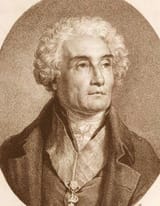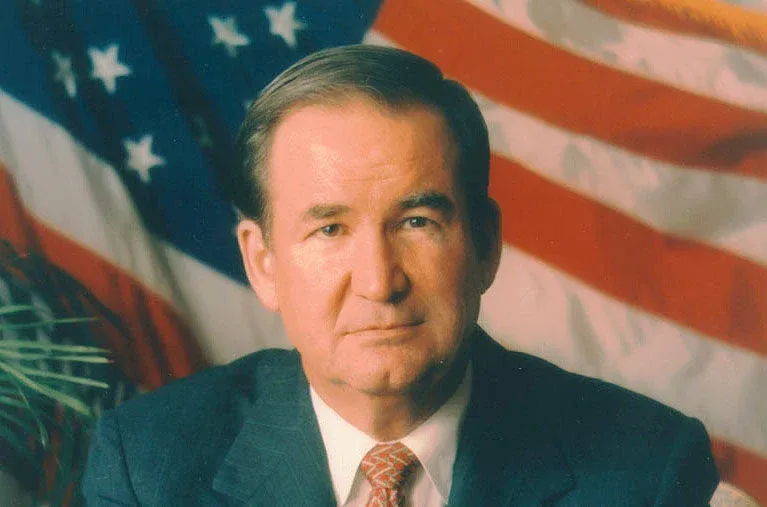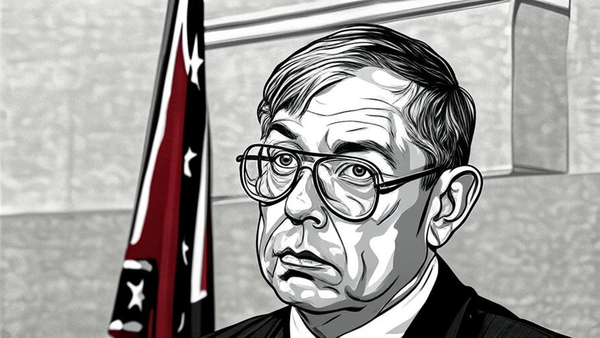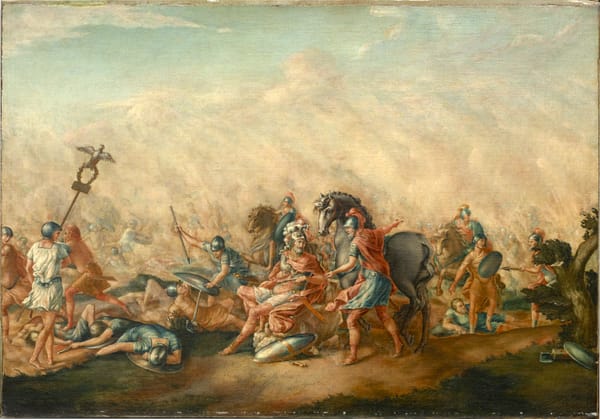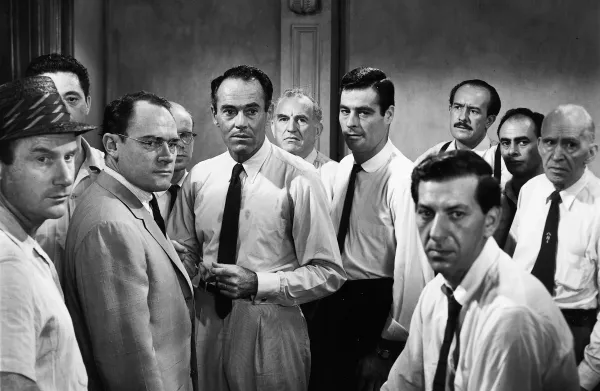Where the Right Went Wrong — Revisited in 2025
There is nothing left to “conserve” in the liberal imperium.
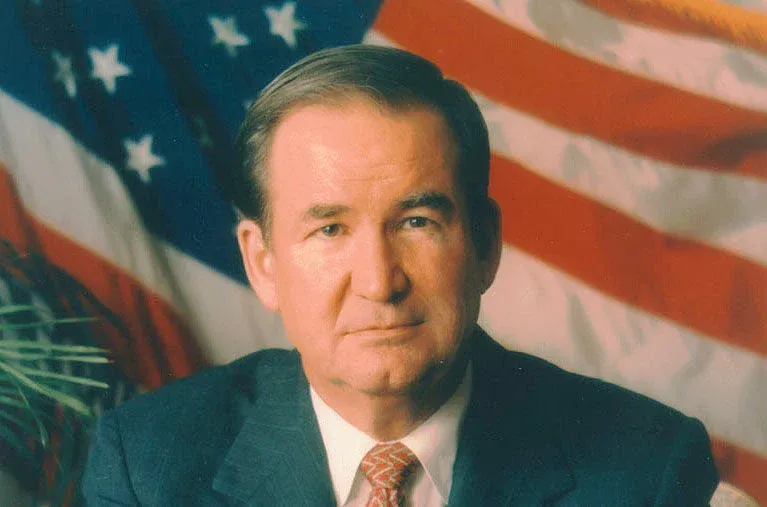
In 2004, Pat Buchanan published Where the Right Went Wrong, a scorching polemic against the neoconservative cabal he believed had hijacked both conservatism and the American Republic. Buchanan sought to explain how a political movement that once stood for tradition, nation, and restraint became an engine for global empire, mass immigration, and cultural decay.
Twenty years later it reads less like a dated jeremiad and more like prophecy. Buchanan took aim at the rising tide of neoconservatism within the conservative movement. Revisiting Buchanan’s book now is instructive because it serves as both postmortem and premonition. Buchanan’s warning was ignored by a conservative base still high on post-9/11 jingoism and “Mission Accomplished” triumphalism. At the time, the neocon agenda was ascendant, its influence radiating from the editorial pages of The Weekly Standard and the West Wing of the Bush administration. Yet two decades later, the political terrain has shifted. The Iraq War is discredited, and its intellectual architects are largely personae non gratae in populist circles. One might assume that neoconservatism, like the war it championed, is a spent force.
But like all resilient ideologies, it has morphed. Today, we are witnessing a rebranding rather than a retreat. The neoconservative ethos of foreign policy hawkishness and messianic militarism has not vanished; it has simply changed clothes.
Back then, Buchanan joined the likes of Sam Francis, Joe Sobran, Paul Gottfried, Justin Raimondo, and Robert Novak in identifying neoconservatism not just as a mistaken school of thought, but an ideological parasite that devours the host under the guise of saving it. And now, in 2025, the parasite seems to be stirring again, emboldened by elite institutions, donor money, and a GOP desperate to be respectable in polite imperial circles.
What we are witnessing is not a revival of first-generation neoconservatism, which came from the anti-Communist Left and was animated by a secular universalism. Rather, this is a "nationalist-neocon" synthesis: still hawkish, still interventionist, but cloaked in the rhetoric of defending “Western civilization” and “Judeo-Christian values.” Ukraine and Gaza have replaced Iraq and Afghanistan as the objects of endless entanglement.
This fusion poses new challenges for the authentic Right. The “Religious Right” of the 1970s and 80s was absorbed into an earlier version of neoconservatism, becoming its political foot-soldiers. All the talk of being a “lone bulwark” notwithstanding, it was Evangelical voters in the 90s that were responsible for nominating Bob Dole and the Bushes rather than Buchanan. The “New Christian Right” must not suffer the same fate, becoming apologists for a “conservatism” that speaks the language and rhetoric of the base while subtly reintroducing the same policies Buchanan once condemned: the conflation of American and Israeli interests synthesized with an overweening military-industrial and technocratic state. As Paul Gottfried warned years ago, neoconservatism’s greatest scam was to pose as the Right while redefining its terms.
The Neocons, Then and Now
Buchanan traced neoconservatism’s origins to northeastern universities and a handful of Cold War-era journals. At the time, its architects were mostly secular and often Jewish intellectuals of Trotskyite and liberal origin—many disaffected by the Left’s descent into anti-Americanism and anti-Zionism. They reinvented themselves as Cold War hawks and Reaganite realists, but in reality supported permanent war abroad, managerial statism at home, and had a deep suspicion of anything resembling Middle American particularism.
Beneath the patriotic gloss was always a project deeply skeptical of the Old Right’s non-interventionism and rooted instead in managerialism, elite consensus, and a relentless belief in American empire—especially when that empire served Israel’s interests.
This is not conspiracy, it’s public record. Max Boot—still gainfully employed as a foreign affairs columnist by the Washington Post, despite a perfect record of failed predictions—wrote in the Wall Street Journal that unwavering support for Israel is “a key tenet of neoconservative ideology.” The late Richard Perle, a Bush-era architect of disaster, was blunter: American power should be used to reshape the world in the image of a globalized liberal order, with the U.S. as its military and moral enforcer. Iraq was only the first domino. Iran, Syria, Lebanon, and were also on the list. Indeed, neoconservatism is specifically driven by a pathological hatred of Iran and Russia, which ought to tell us who is currently driving American foreign policy.
As Buchanan documented, many of these ideas were incubated not in Washington, but in Jerusalem. A 1996 policy paper—A Clean Break: A New Strategy for Securing the Realm—authored by Perle, Douglas Feith, and David Wurmser for Israeli Prime Minister Benjamin Netanyahu, explicitly called for the removal of Saddam Hussein as an “Israeli strategic objective.” That blueprint would resurface after 9/11, dressed in American flags and “freedom fries,” but it was always a foreign policy of borrowed interests.
Trump, for a time, disrupted this consensus. His campaign in 2016 was an accidental wrecking ball—questioning NATO, calling Iraq a mistake, and promising an “America First” realism. But that posture has since decayed. Trump has recently suggested the U.S. could take control of the Gaza Strip and turn it into a 'freedom zone,' and he recklessly and pointlessly bombed the Houthis and Iranians. Ukraine receives a blank check and billions flow to Tel Aviv and Kiev while American cities rot and the promise of mass deportations remains a dreamy hypothetical. A militarized foreign policy continues to mask a derelict domestic one. The man who predicted we would have World War III if the Democrats won, is now the main figure pushing war across the globe and the architects of these policies are still welcome at conservative conferences, still pulling strings at AEI, Hudson, and the Foundation for Defense of Democracies.
The Deep Regime and the Permanent Revolution
One of Buchanan’s sharpest insights—easily missed by critics more interested in calling him names than reading his work—is that America’s foreign adventurism isn’t some accidental deviation from our national character. It’s the predictable outworking of a ruling class that despises national boundaries, traditional loyalties, and Christian morals. Buchanan called it the "New World Order." Today, we might call it the Regime, or simply the Blob.
The neocons were merely one faction—an especially aggressive, fanatical, and ideological one—but they were always embedded in something deeper: a permanent bipartisan elite consensus, enforced by the State Department, corporate media, and intelligence services. And when they faltered, others picked up the banner.
Obama bombed Libya in the name of a moral imperative to prevent an alleged massacre. Biden armed Ukraine in the name of “democracy.” Trump bombed Syria after watching cable news coverage of chemical attacks and handed the wheel to Jared Kushner and Dan Senor on Middle East policy in his first term.
The Regime doesn’t need elected officials to be evil or brilliant—just compliant in the face of vague moral demands divorced from national interest.
When Buchanan published Where the Right Went Wrong, the GOP was fully in thrall to this worldview. Bush’s second inaugural promised the “ultimate goal of ending tyranny in our world,” a line that sounded more like Woodrow Wilson than anything resembling a conservative foreign policy. That speech was drafted in part by Wheaton College grad Michael Gerson, who perfectly synthesized faux Christian morality with imperium, and was hailed for its universalist idealism—a telltale sign of its ideological pedigree.
Buchanan rejected all of this. He argued that the role of the U.S. government was to defend its own citizens, not to police the globe or export democracy to tribal regions with no alphabet. He called instead for tariffs, immigration controls, national sovereignty, and withdrawal from imperial entanglements. In other words, he was Trump before Trump—minus the real estate and reality TV.
And yet, when Trump came along, most of the policies Buchanan championed were quickly watered down or reversed. Why? Because populism without personnel is mere performance. The "deep state" is not just bureaucrats—it’s a deeply embedded worldview that views nationalism, Christianity, and social hierarchy as threats.
So why are neocon ideas once again slipping into positions of influence? How is it that we always end up with the foreign and defense policies of Lindsey Graham? Neocons never lost the infrastructure war. While the populist Right made memes, they made institutions. They trained foreign policy staff, wrote grant checks, and ran think tanks. They understand power.
Meanwhile, MAGA was purging “RINOs” from its Twitter mentions while keeping the Heritage Foundation warm for its next round of ideologically incoherent hires.
Even Buchanan’s own insights into the deeper war—between the West and the post-West, between Christendom and the managerial state—have yet to fully penetrate the bones of the Right. We are still tempted to believe that electoral victories can reverse civilizational decline. That if we just "own the libs" hard enough, the regime will surrender.
But the Left understands something the Right often forgets: cultural revolutions are permanent unless reversed by force of will, institutions, and doctrine. That’s how they’ve governed for a century. The New Deal. The Great Society. The Civil Rights Regime. Woke Capital. Each builds upon the last like theological dogma.
What’s required now is not just resistance but reconstruction: a long march of our own through churches, schools, homesteads, banks, and local governments. Buchanan pointed us to the enemy. It’s our task to organize and fight.
Where Pat Fell Short
Buchanan’s critique remains bracing and, in many ways, prophetic. His dissection of neoconservative ideology is precise, his historical grounding solid, and his polemics cut to the quick. But the book stumbles in its final chapters, and time has revealed some of those stumbles more clearly.
For one, Buchanan assumed that the neoconservatives had overplayed their hand and that the Iraq War would discredit them permanently. He was half right: the war did fail—but the architects were never punished. They simply moved to cable news, op-ed pages, think tanks, and university fellowships. Some even rebranded as principled conservatives during the Trump years, enjoying polite applause from MSNBC panels and Atlantic salons.
Buchanan also placed too much faith in electoral politics as the mechanism for conservative renewal. Despite his deep cultural insight, Pat remained a man of the campaign trail. His endorsement of Bush’s re-election in 2004—despite everything he had written about the administration’s failures—reflected the same impulse that haunts the Right to this day: the belief that if only our guy wins, the ship can still be turned.
But the regime cannot be saved by accommodating it. Buchanan diagnosed the disease but hesitated at the cure. As Sam Francis put it, the time has come not for restoration, but for realignment. The Right must stop trying to conserve a liberal order already lost—and begin the work of building anew.
Beyond Politics: Building What the Regime Cannot
Buchanan closed Where the Right Went Wrong with a call to reclaim the soul of the conservative movement. But even he seemed unwilling to fully abandon the delusion that the old political order was still salvageable. Two decades later, we can say with certainty that it is not.
There is nothing left to “conserve” in the liberal imperium. The neoconservative project—indistinguishable from the bipartisan regime it serves—has hollowed out every institution that once moored the American people: church, family, community, even the nation itself. What remains is a globalized managerial state propped up by debt, demographic replacement, and forever war—policed by NGOs and given moral cover by a press that acts as its chaplaincy.
In such a moment, Buchanan’s best instincts shine through, particularly when he echoes thinkers like Sam Francis, who understood that political action must be preceded by cultural restoration. A political counter-revolution without a metaphysical foundation is destined to become just another pressure group begging for a seat at the regime’s table.
Francis urged the Right to abandon its nostalgic loyalty to a ruling class that despises it and to align instead with Middle America—those disinherited and dispossessed by the new order. Not to form “coalitions” with the regime’s gatekeepers, but to polarize and to build anew. Not to conserve the husk of liberalism, but to construct a rival culture rooted in truth and tradition.
That work begins not in think tanks or Senate hearings, but in homes and parishes, local schools and small businesses, where an authentic Christian and national life can be lived in defiance of the regime’s demands. It means raising children who know their identity—cultural, religious, national, racial—and are not ashamed to say so. It means reasserting biblical fatherhood, covenant marriage, meaningful labor, and local loyalty. It means turning off cable news and catechizing your household. It means worshiping God like he is real and living as if you are his.
Buchanan was at his best when pointing toward this deeper current—when reminding his readers that the real battle was not merely political, but civilizational, even spiritual. Where the Right Went Wrong remains a vital indictment, a case study in how a movement was captured and reprogrammed. But the true remedy lies not in recapturing the old order, but in preparing what comes after its collapse.
What Comes Next?
The question is not whether the Right can retake power in Washington—the question is whether it matters. Will that power be used for the common good and can the nation and culture be rebuilt? This demands patience, discipline, and above all, faith. The movement must look beyond personalities and create enduring institutions and alliances.
The Biden years demonstrated how fragile the American experiment has become. 2024’s narrow victories showed how contested every inch of the ground remains. If Buchanan’s analysis remains true, the next decades will be defined not by polite electoral politics, but by a deeper cultural and spiritual war.
As Christians and rightists, the call is clear: to build, to teach, and to endure. To reclaim not only institutions, but hearts and minds. There is no going back. But there is still a way forward—for those with eyes to see, ears to hear, and the courage to build.
ATTENTION READER: We need your help.
Institutional trust is at record lows. But without institutions, we cannot renew our people, much less provide an inheritance to posterity. In response to this crisis and as an organic outgrowth both of necessity and natural interest, American Mantle exists. And so we make our appeal.
Donate to the Cause. Help us reach our monthly goal in order to solidify this crucial institution.

